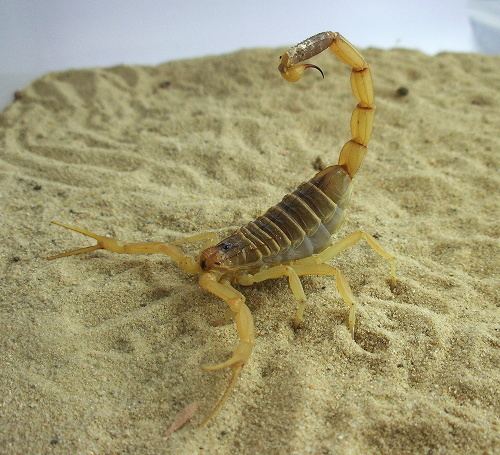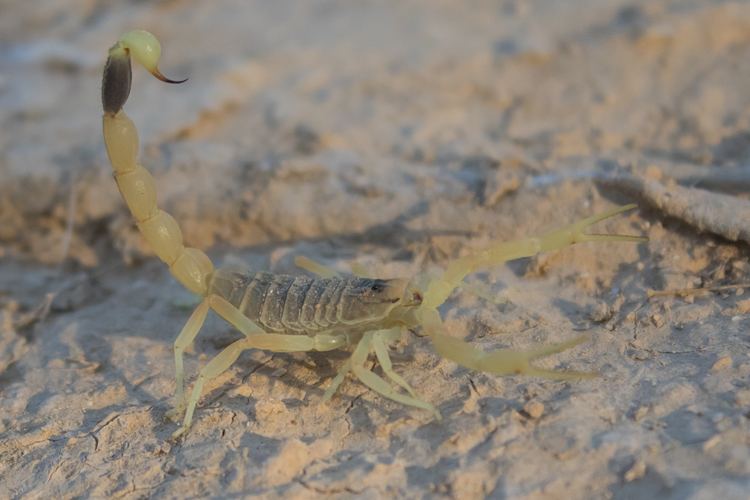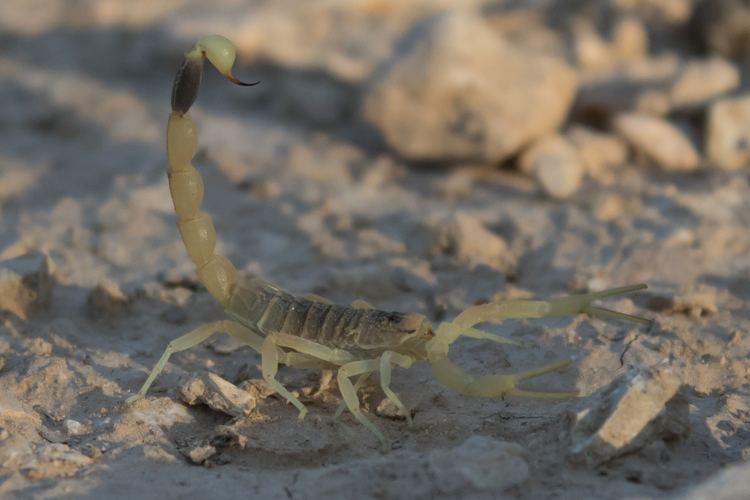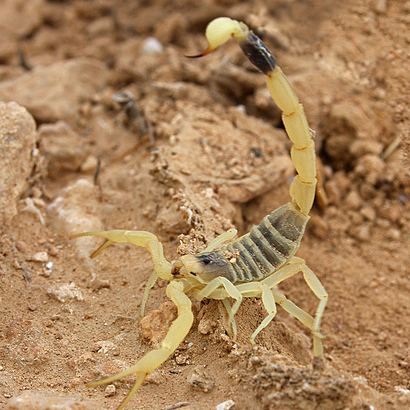Rank Species | Genus Leiurus Higher classification Leiurus | |
 | ||
Similar | ||
The deathstalker (Leiurus quinquestriatus) is a species of scorpion, a member of the Buthidae family. It is also known as Palestine yellow scorpion, the Israeli yellow scorpion, Omdurman scorpion, Naqab desert scorpion and many other colloquial names, which generally originate from the commercial captive trade of the animal. To eliminate confusion, especially important with potentially dangerous species, the scientific name is normally used to refer to them. The name Leiurus quinquestriatus roughly translates into English as "five-striped smooth-tail". Other species of the genus Leiurus are also often referred to as "deathstalkers".
Contents
- Mgsv 100 completion list animal capturing 07 deathstalker 60fps
- Description
- Geographic range
- Venom
- Hazards
- Uses
- Legality
- References

Mgsv 100 completion list animal capturing 07 deathstalker 60fps
Description
Leiurus quinquestriatus is yellow, and 30–77 millimetres (1.2–3.0 in) long, with an average of 58 mm (2.3 in).
Geographic range

Leiurus quinquestriatus can be found in desert and scrubland habitats ranging from North Africa through to the Middle East. Its range covers a wide sweep of territory in the Sahara, Arabian Desert, Thar Desert, and Central Asia, from Algeria and Mali in the west through Egypt, Ethiopia, Asia Minor and the Arabian Peninsula, eastwards to Kazakhstan and western India in the northeast and southeast.
Venom
Neurotoxins in L. quinquestriatus venom include:
Hazards

The deathstalker is regarded as the most dangerous species of scorpion. Its venom is a powerful mixture of neurotoxins, with a low lethal dose. While a sting from this scorpion is extraordinarily painful, it normally would not kill a healthy adult human. However, young children, the elderly, or infirm (such as those with a heart condition and those who are allergic) are at much greater risk. Any envenomation runs the risk of anaphylaxis, a potentially life-threatening allergic reaction to the venom. A study from Israel shows a high rate of pancreatitis following envenomation. If a sting from Leiurus quinquestriatus does prove deadly, the cause of death is usually pulmonary edema.

Antivenom for the treatment of deathstalker envenomations is produced by pharmaceutical companies Twyford (German) and Sanofi Pasteur (French), and by the Antivenom and Vaccine Production Center in Riyadh. Envenomation by the deathstalker is considered a medical emergency even with antivenom treatment, as its venom is unusually resistant to treatment and typically requires large doses of antivenom.

In the United States and other countries outside of the typical range of the deathstalker, there is the additional complicating factor that none of the existing antivenoms are approved by the Food and Drug Administration (or equivalent agencies) and are only available as investigational drugs (INDs). The US Armed Forces maintain an investigational drug application for the AVPC-Riyadh antivenom in the event of envenomation of soldiers in the Gulf War theater of operations, and the Florida Antivenin Bank maintains an IND application for Sanofi Pasteur's Scorpifav antivenom.
Uses

A component of the deathstalker's venom, the peptide chlorotoxin, has shown potential for treating human brain tumors. There has also been some evidence to show that other components of the venom may aid in the regulation of insulin and could be used to treat diabetes.

In 2015 clinical trials were beginning of the use of chlorotoxin with a fluorescent molecule attached as brain tumour "paint" (BLZ-100), to mark cancerous cells in real time during an operation. This is important in brain cancer surgery, where it is vital both to remove as many cancerous cells as possible, but not to remove healthy tissue necessary for brain functioning. In preclinical animal trials the technique could highlight extremely small clusters of as few as 200 cancer cells, compared to the standard use of MRI, with a lower limit in excess of 500,000.
Legality
Possession of L.quinquestriatus may be illegal or regulated in countries with laws prohibiting the keeping of dangerous animals in general. Jurisdictions are increasingly explicitly including L.quinquestriatus in laws requiring permits to keep animals which are not usual pets, or restricting possession of dangerous animals, and in some cases have prohibited the keeping of L.quinquestriatus save by licensed zoos and educational facilities.
In several jurisdictions departments of fish and wildlife require permits for many animals, and a number of cities and municipal governments have prohibited their possession in their bylaws.
